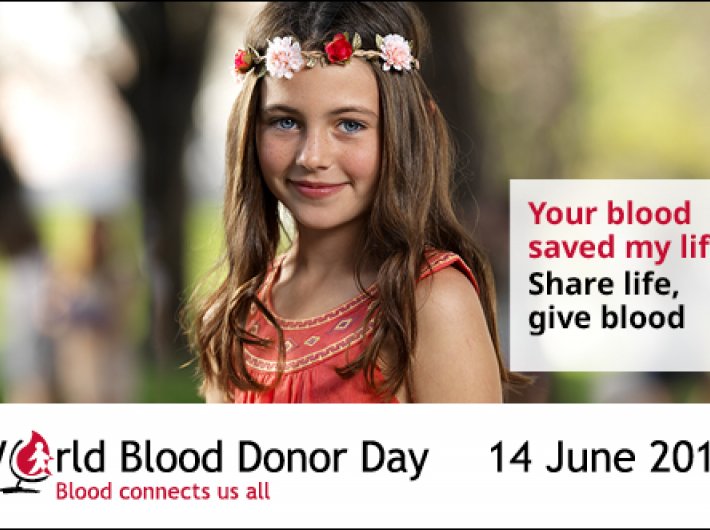Against an annual demand of 12 million units of blood, India is able to collect only nine million units
World Blood Donor Day is observed every year to mark the birthday of Karl Landsteiner, an Austrian physician, born on June 14, 1868. In 1901, he discovered the first three human blood groups, ABO.
Since 2004, June 14 is observed as World Blood Donor Day to raise public awareness about the need for safe blood donation and to show gratitude to the voluntary and unpaid blood donors all around the world for saving lives.
This year, the theme of World Blood Donor Day is “Blood connects us all”, highlighting the common bond that all people share in their blood.
Many events are held around the world on this day including football matches, concerts and mobile blood donation clinics.
Against an annual demand of 12 million units of blood, India is able to collect only nine million units of which 70% is from voluntary blood donors while the remaining 30% is from family/replacement donors.
In India, the first record of voluntary blood donation (VBD) initiative can be traced back to 1942, during the time of World War II. The first blood bank was established in Kolkata, West Bengal. The blood bank was set up to fulfill the blood needs of the injured during battle.
Today after intensive efforts and awareness drives by the government and non-governmental organisations, there has been a progressive increase in voluntary blood donation in the country.
According to annual reports 2007-08 to 2012-13, by department of AIDS control, ministry of health and family welfare, in the year 2006-07, VBD was only 54.4%, it increased to 59.1% in 2007-08, 61.7% in 2008-09, 74.1% in 2009-10 to 79.4% in 2010-11 and 83.1% in 2011-12.
The total annual collection has also shown an absolute increase 4.4 million blood units in 2007-08 to 9.3 million units in 2012-13.
Key facts about blood donation in the world (from World Health Organisation) are:
- Of the 108 million blood donations collected globally, approximately half of these are collected in the high-income countries, home to 18% of the world’s population.
- In low-income countries, up to 65% of blood transfusions are given to children under 5 years of age.
- In high-income countries, the most frequently transfused patient group is over 65 years of age, accounting for up to 76% of all transfusions.
- An increase of 8.6 million blood donations from voluntary unpaid donors from 2004 to 2012 has been reported by 162 countries. The highest increase of voluntary unpaid blood donations is in the South-East Asia (78%) and African (51%) Regions. The maximum increase in absolute numbers was reported in the Western Pacific Region.
- 73 countries collect more than 90% of their blood supply from voluntary unpaid blood donations (38 high-income countries, 26 middle-income countries and 9 low-income countries). This includes 60 countries with 100% (or more than 99%) of their blood supply from voluntary unpaid blood donors.
- In 72 countries, more than 50% of the blood supply is still dependent on family/replacement and paid blood donors (8 high-income countries, 48 middle-income countries and 16 low-income countries).
- 25 countries still report collecting paid donations in 2012, around 1,500,000 donations in total.
The misconception that a person becomes weak by donating blood is wrong. On the contrary, there are several benefits of blood donation given by Indian Red Cross Society:
- Donating blood improves overall cardiovascular health as blood donated regularly helps males in particular to reduce the amount of iron in the blood which can reduce the chance of heart attacks.
- It can also lower the risk of severe cardiovascular events such as stroke.
- Blood donation enhances the production of new blood cells as new cells are produced by the marrow within 48 hours of donation, and all of the red blood cells the donor loses during donation are completely replaced within one to two months.
- Blood donation has also been seen to lower risk of cancer including liver, lung, colon, stomach and throat cancers.
